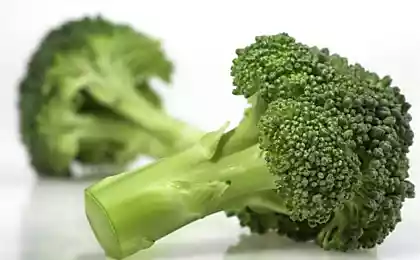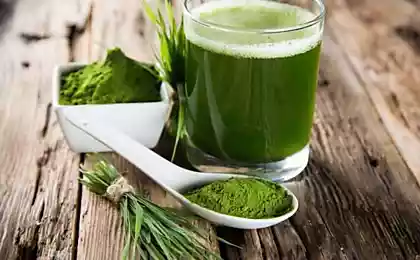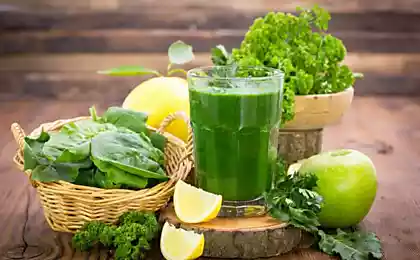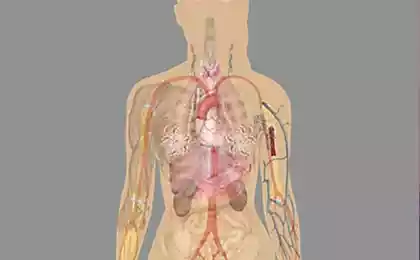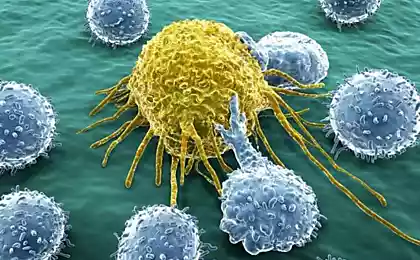481
Ayurveda: how to get rid of toxins in the body

AMA, or toxic build up, namerevalsya food or toxins complicates the treatment of the three doshas. In General, the AMA has the same characteristics as Kapha. It's heavy, dense, cold and sliseobrazutee and consists mainly of secretions mucoid character. But it can be combined with any of the dosha.
Dosha, combined with the AMA, called "sama" ("sa" means "with" in combination with "AMA" becomes "sama" in Sanskrit). Vata may accumulate as poison in the colon and spread to the small intestine, thereby blocking the digestive capacity of Agni, which leads to development of AMA. Kapha can also block the Agni and cause AMA to accumulate in the stomach in the form of mucus and penetrating then into the small intestine. Pitta accumulates in the form of bile into the small intestine; at the same time, despite the fact that she s hot, she, nevertheless, can block the Agni because of its liquid consistence and oily nature; the consequence is the emergence of AMA. Such States are called respectively "very Vata", "Kapha" and "Pitta itself".
Agni and AMA in its characteristics the opposite. AMA is cold, wet, heavy, clouded, with a bad smell and unclean. Agni is hot, dry, light, clear, fragrant (aromatic) and clean. To treat AMA, it is necessary to strengthen Agni.
Psychologically AMA is due to negative emotions. Negative emotions inhibit mental Agni, or clarity of consciousness. As a result of physical Agni is also reduced.
Symptoms of AMA include reduced taste and appetite, bad digestion, coated tongue, bad breath, decrease in physical strength, feeling of heaviness, slowness and blockage of channels and blood vessels. Other symptoms are accumulation of toxins, foul-smelling body, bad smelling urine and stool, deep, heavy or dull pulse, decreased attention, loss of consciousness, depression, irritability and congestion of the other dosha.
AMA is the root cause of the majority of catarrhal conditions, fever and flu, and chronic diseases, typical for weak immune system — these range from allergies and hay fever to asthma, arthritis and cancer.
In all situations where there are similar signs of AMA, treatment should first be directed to its elimination. To treat two doshas are simple and direct manner, if they are accompanied by AMA, it is impossible. For example, the energizing and rejuvenating therapy is possible only after removed from the body of AMA.
AMA declines herbs that have a bitter or sharp, caustic taste. Bitter taste composed of air and ether, helps to separate the Amu, which has of gravity of the tissues and organs in which it is located. The taste will catalyze and thereby reduces the fever, which causes the presence of AMA in the tissues of the body. This taste stimulates the metabolic processes by which foreign material is subjected to disintegration. Like dry ice, it helps to break down the Amu.
Sharp, pungent taste, composed of fire and air, burns and eradicates Amu. It has the same properties as that of Agni and strengthening Agni, it digests AMA. Usually at the beginning of use a bitter taste to stop the development of AMA, later, resorted to a sharp, acrid taste to revitalize the metabolism so that the AMA was spent and could not recover. Bitter taste by itself may be insufficient to completely destroy the AMA, or properly restore Agni.
AMA is enhanced by substances that are sweet, salty or sour taste. Sweet taste, like the AMA, is cold, heavy and wet. The salty taste tiange heavy and wet. Salty and sour tastes through their inherent qualities of heat and humidity, may aggravate the fever and toxic heat blood, which is usually accompanied by the AMA.
Tart (astringent) flavor has a mixed effect on the Amu. Its a linking element in its action on the tissues and discharge can contribute to the retention of AMA in the body. At the same time, it can be used for the treatment of membranes damaged by infectious conditions caused by the AMA. So the taste should be used as an addition to the bitter and acute therapies.
As the main feature of AMA is heaviness, then it is treated primarily with herbs and diet, the nature of which is the ease. It is often useful to recommend fasting as long as you have not cleared language and not back appetite. AMA as a primary factor of the disease, determines the value and use of such therapies as hunger, the use of diets devoid of protective mucosal component, and detoxification, which is used in the treatment of many diseases. These treatments can also be useful in that case, if the Constitution of the patient is not clear.
Since the properties of the doshas are mixed with those of AMA, other herbs, which can weaken the dosha, can be effective in the state itself. Conversely, herbs that under normal conditions exacerbate one or the other dosha can weaken it if the patient is in a state of "itself". Thus, we must not only allocate the doshas, but also to determine whether it is associated with AMA, or free from it (state "myself" or "Nirma", ("NIR" means "without").
Wool, which in normal conditions is light and dry, being mixed with AMA, it becomes heavy and damp. Pitt, which has the characteristics of heat and humidity and becomes colder and more humid. Kapha is heavier and, in normal conditions, being slow in motion, under the action of the AMA can do to slow down and become stationary. The turbidity, viscosity and density, which are inherent to the AMA, will change the characteristics of the doshas.
Vata herself: constipation, bad breath and a bad smell of excrement, coated tongue, pain in the abdomen and bloating (which increases under the action of palpation, massage and the use of oil), accumulation of gas in the small intestine, and pains spasmodic, bad apetyt, a feeling of heaviness, weakness, slow pulse, which agraires cloudy weather.
Treatment: mainly, sharp, pungent herb, stimulating and providing vetrogonnoe action, in conjunction with the use laxative or laxatives to remove toxins.
Wool, nirama: symptoms: no constipation, no bad smell, pain slightly (decreasing when polerowanie), language is not imposed, oral mucosa dry, sticky taste in the mouth, the body (patient) a light, dry, with more pronounced fatigue, a greater degree of omednenija tissue, fatigue, to a lesser extent.
Treatment: body treatment and rejuvenation through mostly sweet and spicy, pungent herbs, in order to physically strengthen the body.
Pitt herself: indications: loss of appetite, reduced water demand, coated tongue, yellow color, the urine, stool and mucosa with a yellow or greenish colour, a feeling of heaviness in the stomach, vomiting gelso and dense mass, bad breath, a bitter or sour taste in the mouth, a feeling of moderate burning sensation, skin inflammation, slow, and unclear consciousness, and these symptoms become stronger when cooled.
Treatment: mostly grass with a bitter or acrid taste, bitter tonic and stimulant in order to remove toxins.
Pitt, nirama: indications: excessive appetite and the need for fluid, red imli inflamed language no plaque, urine and stool, without impurities, of a reddish or dark tone, strong burning sensation, hot flashes, dizziness, perception adequately.
Treatment: cooling and toning therapy, mostly through herbs with sweet and bitter taste.
Kapha, sama: indications: the presence of muddy, sticky or thick, bad waste of mucus, which coats the throat, coats the tongue; sauna stretches in the form of threads; sour or salty taste in the mouth, congestion, discomfort and pressure in the chest, hindered breathing, mucus in the stool and urine, reduced appetite, feeling of heaviness, dull pain, malaise, fatigue.
Treatment: mostly herbs with a pungent or bitter taste, in order to stimulate and relieve congestion, in order to remove toxins and remove mucus and fat from the body.
Kapha, nirama: symptoms: the presence of mucus thin, watery character, sometimes foaming, which easily fades; sweet taste in mouth, normal appetite, not lined, mucus in the feces and urine are not observed, pain is not.
Treatment — mostly pungent and sweet herbs, expectorants, in order to eliminate excess mucus and Kapha.
The usual approach in Ayurveda is to change the state of itself of one or the other doshas in the state of nirama. After recovering from the Amu, it is possible to act directly on the corresponding doshas, eliminating its excessive manifestation and enhancing those qualities that this dosha are in short supply. published
Dr. David Froley, Dr. Vasant Lad, the Yoga of plants.Guide Ayurvedic of herbs
Source: www.nazemle.org/zdorovye/praktiki/111-ayurveda-kak-izbavitsya-ot-toksinov-v-organizme.html
Remember about us when you eat this fish: Learn the truth about seafood from Your table
Sepp Holzer: Like in the harsh climate to grow heat-loving plants and fruit trees

